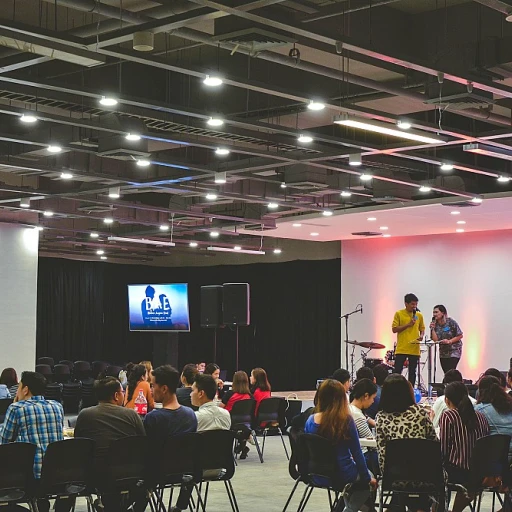
Understanding Staff Retention in HRIS
Defining the Core of Employee Retention
Employee retention is a vital aspect in maintaining the stability and growth of any organization. At its core, it's about keeping talent within the company for the long term. The retention strategy focuses on minimizing the loss of valuable employees, which often is measured through metrics like turnover rates and retention rates. High employee turnover can be costly for businesses, impacting workforce productivity and overall work environment.
Managing employee attrition effectively requires thoughtful retention strategies. Companies strive to enhance job satisfaction through better work-life balance, engaging management practices, and fostering a positive company culture. By doing so, they reduce turnover rates and ensure that employees feel valued.
An effective management approach must acknowledge various reasons why employees leave their jobs. Factors can range from opportunities for career advancement to work environment issues, making it crucial for businesses to design tailored initiatives. Retention doesn’t merely involve human resources but also encompasses broader business goals.
To delve deeper into the synergy of technology and retention, the interaction among different HR systems can be pivotal. Exploring platforms like Ceridian and NetSuite in HRIS can offer insights into integrated solutions that advance employee engagement and retention strategies. Understanding these dynamics not only aligns with organizational strategies but also results in measurable retention rate improvements.
Organizations should constantly evolve their employee engagement initiatives. The integration of these strategies not only enhances the retention rates but cultivates a work environment where top talent is more likely to stay and thrive. By focusing on these aspects, companies can address both employee turnover and organizational growth effectively.
Alternative Terms for Staff Retention
Different Nomenclatures for Employee Retention Efforts
The concept of employee retention is widely acknowledged in the realm of human resources, yet not everyone may be familiar with its various terminologies. Beyond merely trying to keep staff from leaving, the focus extends to creating a favorable work environment that encourages long-term engagement.
Here are some common alternative terms associated with staff retention:
- Employee Turnover Management: This term emphasizes understanding and controlling the turnover rates across the workforce in order to retain top talent.
- Workforce Retention Strategies: Companies often devise strategies aimed at fostering a work culture that supports longevity and retains talent within the organization.
- Attrition Management: Managing employee attrition involves analyzing why staff may leave and addressing these concerns to improve retention rates.
- Retention Employee Initiatives: These initiatives focus on unique benefits and policies that actively encourage employees to remain with their current jobs, boosting overall job satisfaction.
The varied language surrounding staff retention illustrates the multifaceted nature of addressing employee turnover. Each terminology brings its unique emphasis, underlining different angles of employee retention management. As organizations strive to maintain a stable workforce, understanding these terms helps them tailor their approaches efficiently.
To explore further how technology can play a role in engaging employees and aiding in retention strategies, consider reading about the navigating the tandem HR login process for efficient HR management.
The Role of Technology in Employee Engagement
Leveraging Technology for Enhanced Workforce Engagement
In today's fast-paced business landscape, the role of technology in fostering employee engagement is indispensable. As companies seek innovative alternatives to traditional staff retention strategies, integrating advanced technological solutions becomes pivotal. It not only enhances employee satisfaction but also mitigates the challenges associated with high turnover rates. Essential Tools for Employee Engagement- Employee Feedback Platforms: Implementing platforms that allow for continuous and meaningful feedback helps employees feel valued and heard. These tools contribute significantly to the overall work environment and, ultimately, retention.
- Digital Onboarding Solutions: Streamlining the onboarding process through digital solutions ensures new employees feel welcomed and part of the company culture from day one. An efficient onboarding experience can lower initial attrition rates and lead to long-term satisfaction.
- Automated Recognition Systems: Leveraging automated systems to acknowledge employee achievements can boost morale and engagement. Recognizing top talent and their contributions is a key to maintaining a motivated workforce.
Data-Driven Approaches to Workforce Stability
Data-Driven Insights for Workforce Stability
In today's rapidly evolving business landscape, organizations are increasingly turning to data-driven approaches to ensure workforce stability. Utilizing Human Resources Information Systems (HRIS) offers immense potential in managing employee retention, engagement, and turnover rates. HRIS empowers businesses to analyze critical data related to employee turnover and attrition, paving the way for informed decision-making. Through HRIS, organizations can track metrics like turnover rate, job satisfaction, and employee engagement scores, providing valuable insights into the workplace dynamics.- Identifying Patterns and Trends: By leveraging HRIS, employers can identify patterns in turnover, understanding why employees leave or stay. This identification is crucial in tailoring targeted strategies that address underlying issues affecting retention.
- Predictive Analytics: Modern HRIS platforms often incorporate predictive analytics capabilities. These tools use historical data to forecast future trends in staff turnover and employee attrition. By staying ahead of potential issues, organizations can take proactive measures to retain their top talent.
- Employee Feedback and Engagement: Effective data collection via HRIS systems includes feedback from employees about their work environment and company culture. This feedback enables organizations to enhance their engagement strategies, ensuring that employees feel valued and heard.
- Benefit Optimization: Data gathered by HRIS can guide organizations in optimizing their benefits packages. Understanding what employees value most in terms of work life balance and benefits can lead to improved retention rates.
Innovative Strategies Beyond Traditional Retention
Reimagining Employee Engagement to Boost Retention
Pioneering strategies in the realm of staff retention are more critical than ever, especially as companies strive to lower turnover rates and maintain top talent within their workforce. Corporations are moving beyond conventional methods and embracing fresh perspectives to enhance employee satisfaction, engagement, and long-term commitment.
One innovative approach is to reimagine the work environment itself. Creating a dynamic and flexible workplace where employees feel empowered and valued can play a significant role in reducing staff turnover and boosting retention rates. Many organizations are adopting hybrid work models that offer a balance between professional and personal life, thereby increasing job satisfaction and commitment.
The definition of employee engagement has evolved over time, with organizations now focusing on creating a holistic employee experience. This includes offering personalized career development plans, wellness programs, and fostering a strong, inclusive company culture. By addressing the diverse needs of employees, organizations can foster a more engaged and loyal workforce.
Investing in talent management and recognition programs is another way companies can combat employee attrition. Recognizing achievements, providing regular feedback, and offering opportunities for skills development enhances employee morale and motivates them to stay with the company.
Moreover, leveraging data-driven insights allows businesses to pinpoint underlying causes of employee turnover. By analyzing patterns in attrition employee behavior, companies can anticipate issues before they lead to an increase in turnover rates. This proactive approach helps in developing targeted interventions that cater to the unique needs of the workforce.
Ultimately, the benefits of innovative retention strategies go beyond simply keeping employees; they create a thriving business environment where individuals are inspired to do their best work. Successful implementation of such strategies not only stabilizes the workforce but also paves the path for sustainable growth and success in the organization.
Case Studies: Successful HRIS Implementation
Real-World Examples of HRIS Success
In today's competitive business landscape, organizations are increasingly turning to Human Resources Information Systems (HRIS) to enhance employee retention and reduce turnover rates. By leveraging technology, companies can gain valuable insights into their workforce, enabling them to implement effective retention strategies. Here, we explore some successful case studies that highlight the impact of HRIS on employee engagement and retention.
Case Study 1: Tech Company Reduces Turnover
A leading tech company faced high employee turnover rates, which affected their ability to retain top talent. By implementing an HRIS, they were able to analyze data on employee attrition and identify key factors contributing to staff turnover. The system provided insights into job satisfaction levels and work environment issues, allowing management to address these concerns. As a result, the company saw a significant decrease in turnover rates and an improvement in employee engagement.
Case Study 2: Retail Chain Enhances Employee Engagement
A major retail chain utilized HRIS to improve employee engagement and retention. The system enabled the company to track employee performance and job satisfaction over time, providing a clear definition of areas needing improvement. By focusing on enhancing company culture and offering better work-life balance, the organization successfully increased retention rates. Employees felt more valued and motivated, leading to a more stable workforce.
Case Study 3: Healthcare Provider Boosts Workforce Stability
A healthcare provider struggled with high attrition rates, impacting their ability to deliver quality care. Through HRIS, they gained insights into employee turnover patterns and identified opportunities for improvement. By implementing targeted retention strategies, such as offering competitive benefits and fostering a supportive work environment, the provider was able to retain skilled staff and reduce turnover. This not only improved patient care but also strengthened the organization's reputation in the industry.
These case studies demonstrate the transformative power of HRIS in addressing employee retention challenges. By adopting data-driven approaches and innovative strategies, organizations can create a more engaged and stable workforce, ultimately enhancing their overall business performance.












